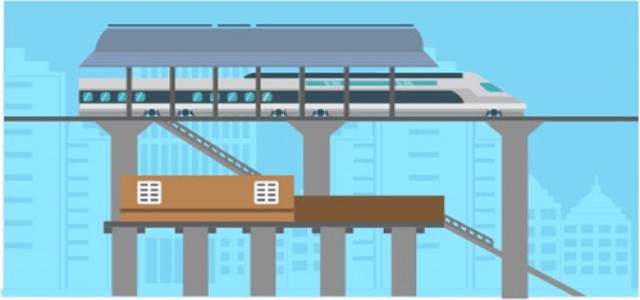
Railway aftermarket is poised to garner exponential growth given to the pressing requirement for corrective and preventive maintenance measures in railway systems. In order to streamline day to day operations, the global railway sector is constantly required to overhaul its system periodically.
Over the past few years, numerous rail operators have grown to become more inclined towards advanced maintenance solutions over basic. As a result of this, the railway department is able to limit breakdowns and malfunctions during operations. Apparently, railway malfunctions cause heavy financial losses as well as impact regular commuters.
Get sample copy of this research report @ https://www.decresearch.com/request-sample/detail/4511
Amplifying inclination of rail operators towards the utilization of innovative methods to maintain technical systems will escalate railway aftermarket share. Railway systems face massive financial losses due to malfunctioning and breakdown of tracks. Thus, rail operators are focusing on automation and real-time monitoring to predict future maintenance decisions and reduce financial losses. For example, the European Union invested in the OPTIRAIL project built on AI and computational intelligence technologies, which provides implications and cost for repairing rail geometrical conditions and new installations.
Metro rail extension projects are emphasizing on the introduction of new core rail systems and metro trains, which will create substantial growth opportunities for railway aftermarket. For example, in November 2019, the government of New South Wales (NSW) awarded a contract worth $1.3 billion to Northwest Rapid Transit (NRT) consortium for the extension of Sydney Metro rail project in Australia. The amount was allocated for the operation and maintenance of North West and City and Southwest lines by 2034.
Adoption of novel technologies, such as advanced analytics solutions and big data among component/third party suppliers is on the rise for development of product portfolios. For example, in March 2017, Knorr-Bremse Group implemented OpenText Analytics to support intelligent fleet management and condition-based maintenance. These services facilitate detection of potential failures in initial stage. Deployment of advanced analytics was targeted to leverage condition-based maintenance for enhancing maintenance efficiency.
Railway aftermarket component suppliers are looking forward to gaining new business opportunities by integration of digital solutions. Railway aftermarket companies are enhancing their expertise to develop innovative data-driven maintenance services. They are also investing heavy amounts in research & development activities to gain an edge over the market, which will significantly push railway aftermarket growth.
Request for a Customization of this research report @ https://www.decresearch.com/roc/4511
Charts & Figures
FIG 1 Railway aftermarket segmentation
FIG 2 Industry size and forecast, (USD Billion), 2016 – 2027
FIG 3 Industry ecosystem analysis
FIG 4 Growth potential analysis, 2018
FIG 5 Porter’s analysis
FIG 6 Railway aftermarket PESTEL analysis
FIG 7 SWOT analysis, CRRC
FIG 8 SWOT analysis, Siemens Mobility
FIG 9 SWOT analysis, ZF Friedrichshafen
FIG 10 SWOT analysis, Stadler
FIG 11 SWOT anaysis, Bombardier Transportation
FIG 12 SWOT analysis, Alstom
FIG 13 SWOT analysis, Knorr-Bremse
FIG 14 SWOT analysis, Harsco Rail
FIG 15 SWOT analysis, Tidyco Ltd
FIG 16 SWOT analysis, Wabtec
FIG 17 SWOT analysis, Kingrail
FIG 18 SWOT analysis, CIM Equipment
FIG 19 SWOT analysis, Powerail
FIG 20 SWOT analysis, Skinest Group
FIG 21 SWOT analysis, Caterpillar
FIG 22 SWOT analysis, ABB
FIG 23 SWOT analysis, Crown Rail Spares
Browse complete Table of Contents (ToC) of this research report @ https://www.decresearch.com/toc/detail/railway-aftermarket
© 2025 groundalerts.com. All Rights Reserved.